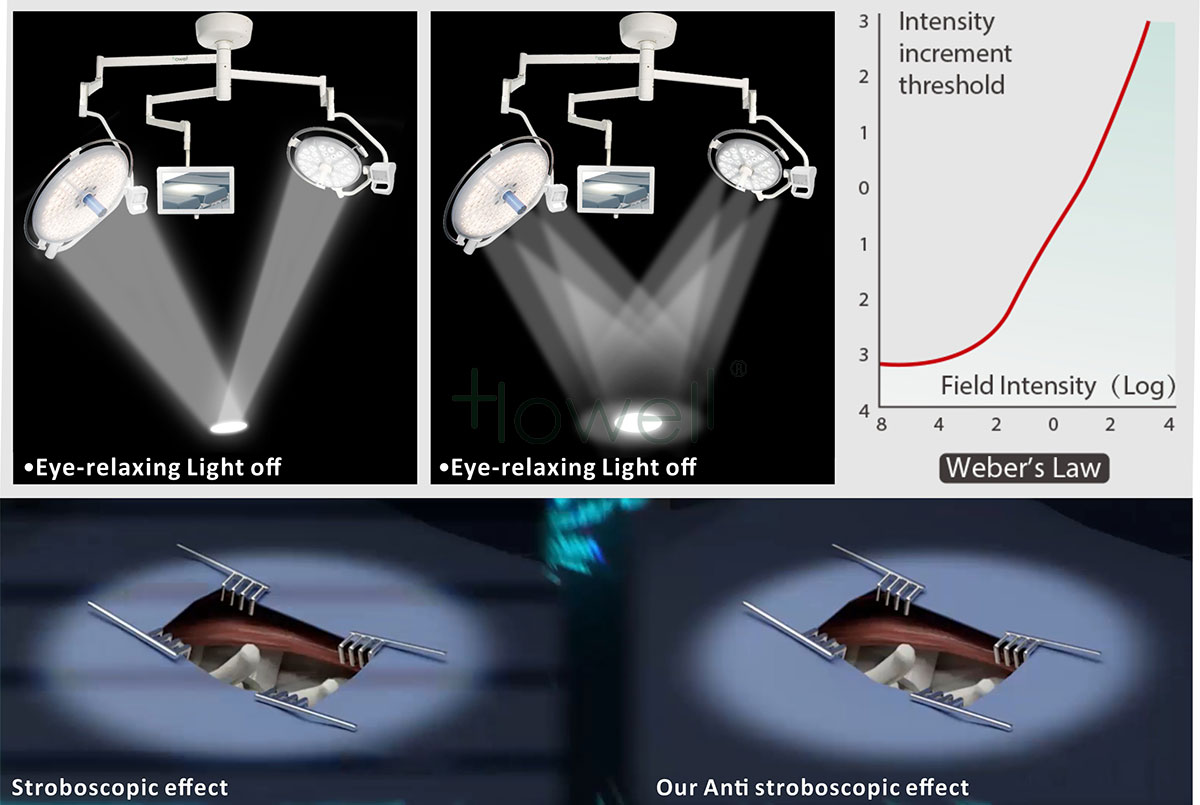Surgical lights, also known as surgical lighting or operating lights, are mainly used in hospital operating rooms and ambulatory surgery centers, but can also be used in various locations throughout the facility to provide high quality lighting for procedures. Examples include emergency rooms, labor and delivery, examination rooms, and anywhere where procedures are completed. They are used by clinicians, surgeons and proceduralists. A surgical light illuminates the operative site on a patient for optimal visualization during a procedure. Surgical lights can provide hours of bright light without excessively heating the patient or staff. A variety of lights are available to meet the needs of providing optimal visualization during surgery and procedures. An examination light is used during medical exams, while
operating room lights are used during surgical procedures.
Surgical lighting configurations may include ceiling-mounted, wall-mounted, or on floor stand. Depending on the model, a surgical light may also be used in all three configurations.1 A ceiling-mounted light can be mounted on a fixed point on the ceiling of a procedure room. Similarly, wall-mounted lights are mounted on a wall of the OR. The wall-mounted configuration is more often used with examination lights versus surgical lights. For greater mobility,
floor standing surgical lights are standalone and typically on wheels enabling them to move room to room.
Mobile floor standing lights are often used in examinations. All three types play an important role in illuminating a surgical site during a procedure.

LEDs can be extremely small, durable, reliable and have a much higher bulb-life rate than conventional lighting. The light output of LEDs is determined by the current through the semiconductor and its temperature and when using the maximum current recommended by the manufacturer, LEDs can have a long life of up to 60,000 hours.6 However, most are generally rated for 25,000 to 40,000 hours of full light and rather than failing abruptly like halogen bulbs, they gradually fade in brightness. In terms of luminous efficacy, LED lights used during procedures typically do not require a filtering media, as is needed with halogen lamps and contributes to their relatively low luminous efficacy. LEDs offer higher efficacy allowing for reductions in connected load of 50% or more, virtually eliminating the problem of infrared radiation caused by excessive heat, with potential for additional energy savings through constant-color dimming and reduced cooling load in the OR.8 The latest LED products are high-flux and have luminous efficacies up to 100 lumens per watt (lm/W) and higher.6 Because past OR practices involved turning lights up to full intensity, original perioperative staff would do the same with LED lights. Unfortunately, this created distortion. To avoid distortion, standard practice is to begin at a 50% intensity level. Many offer enhanced properties for mitigation of shadows cast by the surgeon and perioperative team and some products also allow for color adjustment.
The primary function of surgical lighting is to illuminate the operative site on and/or within a patient for ideal visualization by OR staff during a surgical procedure. With proper lighting, operating room staff can achieve a higher level of efficacy during surgery and reduce the risk of complications.
Surgical light requirements vary depending on the type, brand, and model of the lighting system. The brightness of a surgical light head is measured in Lux and typically does not exceed 160,000 Lux. The approximate dimensions are 400-700mm for a light head diameter and the approximate weight is 45kg. The weight can vary depending on the number of light heads attached to the system. The lifespan of a surgical light is measured in its L70 value, which is how long the light will last until its brightness is 70% of its original value. Today's surgical lights typically last between 40,000 to 60,000 hours of use.
HOWELL medical's operating lights can last more than 80,000 hours.